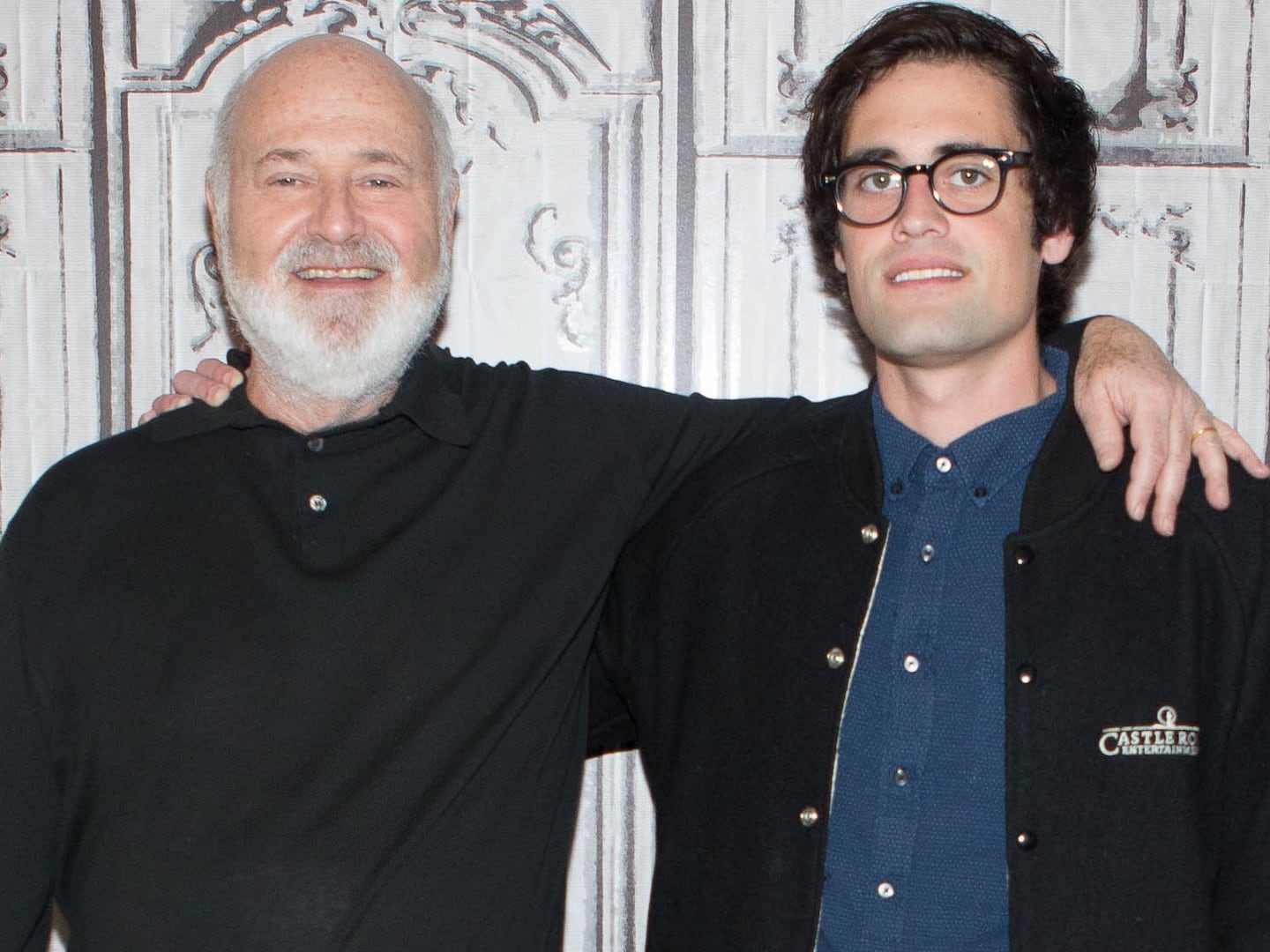Snapchat takes its secrecy seriously. Very, very seriously.
Take the case of one former Snapchat employee. On his first day, he was forced to sit through an ominous orientation in which he was threatened with termination if he so much as breathed a word of what he was working on to friends or family.
He was told that he couldn’t bring anyone into the building unapproved, and those who were cleared could only be taken to specific conference rooms or the cafe.
After taking a seat at his desk, he realized that he couldn’t even speak about his job internally.
The company operates in secret “need to know”-type bubbles, where many in sales, content, or non-engineering roles feel kept in the dark.
Aside from an elite group of engineers and those in Snapchat CEO Evan Spiegel’s inner circle, most employees aren’t given access to the version of the app where its newest features are tested and deployed. This leaves some employees feeling left out.
“I find out about new products mostly through the news,” a different employee said.
Snapchat declined to comment on the record about matters related to the company’s secrecy.
But the company has become so privacy-obsessed it blocks access to its own app at parties and events. At Snapchat’s NYC holiday party at the Beekman Hotel and its massive, $4 million New Year’s Eve blowout in Los Angeles, employees and guests had the cameras on their phones taped over.
“Evan is paranoid and they go ballistic when there’s a leak,” another former employee said.
According to three current employees, one floor of the New York office is entirely off limits and workers are left to speculate what goes on there.
Two sources—one currently at Snapchat, another recently gone—told The Daily Beast that Jason Halbert, Snapchat’s HR chief, remains in Spiegel’s close circle despite an investigation into Halbert’s alleged inappropriate behavior, and is given free rein to investigate potential leakers in the company.
As secretive as Snapchat is about its internal operations, it’s equally as secretive about its data. Snapchat rarely reveals numbers. And the ones it does release are very broad.
While Snapchat has released some overarching statistics during its public statements—including 178 million daily active users in the third quarter of 2017—the company has not made public any detailed stats related to many of the app’s most popular elements.
Employees, partners, and investors have been kept in the dark about how well (or poorly) many key features of the app are doing.

People take pictures in front of the Snapchat Inc. headquarters on the strand at Venice Beach in Los Angeles, California, U.S., on Wednesday, Aug. 14, 2013.
Bloomberg via GettySnapchat was built as a way to privately share photos and messages, yet Snapchat does not publicly disclose data around how many people share photos or messages daily. Instagram, Snapchat’s direct competitor, has released top-line daily active user (DAU) numbers as well as those for its Stories feature.
The Daily Beast reviewed five months of confidential DAU metrics for nearly every feature in the app, including Snap Maps, Discover, Memories, Geofilters, Lenses, Chat, Audio, and Stories.
The data spans from late April to late September 2017 and the information obtained also includes detailed reports on time spent within the app, snaps created versus those posted, geographic breakdown of users, and more.
The data shows that despite its perception as a nascent social platform, Snapchat is much more of a chat app. And key features like Snap Maps have yet to gain widespread adoption among the app’s user base.
In the meantime, the company has begun to beta test a new redesigned version of the app—the first large-scale redesign the company has ever undertaken. And a public release is imminent.
Given some of the numbers, it’s no wonder Snapchat is reinventing itself.
It wasn’t long ago—just June of 2017—when the company launched a major new feature to great fanfare.
Snap Maps was billed as the ultimate tool for meeting up with friends IRL. Users could passively share their location on a map with friends, making it easy to see who was around you and theoretically hang out.
Refinery29, which got an exclusive look at the product, gave it a positive review, saying that it would “transform how you connect with friends.”
Snap Maps was also meant to function as a discovery tool. It was essentially Snapchat’s answer to Instagram Explore.
Along with the locations of your friends, Snap Maps shows popular snaps from certain places, allows users to search and discover new restaurants or venues, and peek into what’s happening at different locations in real time via geographically curated feeds of snaps.

Snapchat co-founders Bobby Murphy, chief technology officer of Snap Inc., and Evan Spiegel, chief executive officer of Snap Inc., smile at each other after ringing the opening bell at the New York Stock Exchange (NYSE), March 2, 2017 in New York City.
Drew Angerer/GettyWhen disaster struck, Snap Maps also became a powerful tool for watching real-time breaking news unfold. Publications like Wired and Quartz praised the feature’s ability to act as a window into what was going on in the world.
Members of Snapchat’s news team—including Snapchat’s head of news, Peter Hamby—met with groups of journalists last fall to promote the feature as a news-gathering tool.
Yet despite all the hype and promotion, Snap Maps’ DAU numbers have been relatively weak and declined sharply post-launch.
While usage spiked mildly on Saturdays, the overall trend line headed steadily down. In the month of September, an average of only 19 million users checked Snap Maps daily, just 11 percent of the app’s total daily user base.
Perhaps in an effort to combat these low numbers, it was recently reported that Snapchat has hired Rahul Chopra, former senior vice president and global head of video at News Corp, to potentially launch a new product called “Stories Everywhere.”
Stories is Snapchat’s pioneering format. A Story is a public feed of photos and videos that disappear after 24 hours. Since Snapchat launched its Stories feature in 2013, the feature has been cloned into Facebook, Instagram, WhatsApp, and Facebook Messenger.
Stories Everywhere would theoretically help raise the presence of Stories content (much of it currently buried in Snap Map) across the web.
This could mean offering things like the ability to embed geographic Stories (short feeds of public videos and photos) on websites much like Twitter allows users to embed tweets.
This move is unlikely to help resurrect Snap Maps, but it may help broaden the awareness of Snapchat’s geographic and location-based Stories.

But at Snapchat, changes happen at a mile a minute, and there’s no time to mourn underperforming products.
“They talk about this place being a rocket ship,” a current employee said. “A few people who have left have jokingly called it the Titanic. Personally, I think it’s more like a roller coaster. The highs are high and the lows can feel low.”
Over the past year, several executives have decided to simply step off the ride.
Tim Sehn’s departure in November marked the fourth executive departure since the company went public last March. Robyn Thomas, Snapchat’s former VP of HR and legal, and Martin Lev, former VP of security and facilities, both left in July, along with Chris Handman, Snap Inc.’s general counsel. Jad Boutros, chief of security at Snapchat, announced that he was leaving the company in January.
Several beloved tech veterans also exited over the past year. Former Timehop founder Jonathan Wegener departed the company this fall and ad exec Sriram Krishnan got tired of commuting from San Francisco to Los Angeles and joined Twitter last February.
In the meantime, Snapchat is struggling to grow its user base and its stock price has been volatile. Its price declined from a high of $27.09 a share shortly after going public to $13.92 per share on Jan. 8.
“If DAUs go down or stay flat, the stock could go under $10,” one former employee said. “I feel like if that happens most people at the company will just quit. I know several friends already looking to get out.”
Snapchat’s stock was downgraded again on Jan. 4 after a survey found that 96 percent of ad buyers would prefer to buy ads on Instagram over Snapchat.
“I don’t know, personally I find this place to be a place where you put in your hours or your years,” one employee said. “I really wished it was a place where I can be a lifer, but I just don’t see that happening.”
Then there’s the question of what Snapchat really is.
Snapchat likes to call itself a camera company, but many of its features only tangentially align with that mission.
For Snapchat’s core user base of 18- to 24-year-olds, Snapchat is a highly addicting hybrid social network and chat app. But for many new users, especially older ones, it’s a disorienting, disconnected jumble—without a clear role in a user’s life.
Data reviewed by The Daily Beast shows that users treat Snapchat more like a traditional chat app than a social-media platform or camera company, though users do send and share a high volume of photos and videos.
“It’s clear that Snapchat is gaining on the personal communication part [messages] but struggles on the Story part,” said Thomas Cilius, CEO of Snapchat analytics firm Snaplytics, after reviewing the data.
The data shows that users sent personal snaps to friends more frequently than they posted to Stories. In August, users were 64 percent more likely to send a snap to a friend than post to Stories and sent an average of 34 chat messages per day.
Investors with deep experience in social and messaging who reviewed the data said they were shocked by how many picture messages users were sending.
Snapchat these days is often compared to Instagram, which has rolled out its own “stories” feature. Investors said what that comparison misses is that Snapchat, at its core, is a messenger product and people are really underestimating it as a messaging platform.
Investors who reviewed the data also said the fact that people are sending and receiving so many photo messages on the platform gives it a huge leg up on iMessage or Facebook Messenger.
The majority of conversation that happens on most chat apps is text-based, and other platforms struggle to get users to exchange photos or videos. Investors said that completely visual messaging at this scale is “a pretty big deal.”
All of this backs up Spiegel’s own depiction of Snapchat. In the past, he has said that users taking selfies on the app aren’t being vain or snapping photos to post later on social media, they’re “talking with pictures.”

But while Spiegel may have a clear vision of what his app is, his employees are often left in the dark, scrambling to build or innovate on products on his every whim.
“We’re running sprints back and forth based on what Evan tells us,” one current employee said.
Other employees say they are given “no visibility of what the company’s future looks like” and that only Spiegel and his select chosen group are made aware of long-term strategy, plans, or vision.
“There’s probably a new idea for everyone to work on every few months with a hard deadline that inevitably gets pushed back. It’s almost a joke when a deadline is set, we’re almost sure it gets pushed back. Even though our managers initially say no, everything is always spun to be better for us.”
One of those deadlines that has been continually pushed back is the rollout of Snapchat’s big redesign, a project internally referred to as project “Cheetah.”
In late November, Spiegel announced that Snapchat would soon undergo its most significant redesign since launching in 2011.
Currently, Snapchat’s media portal, Discover, is housed in the right side of the app and sits below a highly engaging feed of friends’ public Stories. Snapchat Discover features news and entertainment content from top publishers. When a user scrolls to the bottom of their feed of friends’ Stories, they’ll inevitably encounter Discover content.
The revamp is supposed to make the app easier for new users to figure out, but it splits the Discover portion of the app from users’ Stories. With the redesign, Discover content and friend content will live separately.

The entire concept for the redesign has been contentious. Sehn, Snapchat’s then-VP of engineering, left the company in November and was reportedly a critic of Snapchat 2.0.
One of the biggest fears about the redesign is that Discover usage will plummet and it will crater Snapchat’s ad revenue.
Snapchat already lost $443 million in the third quarter of 2017 and desperately needs to prove to investors that it can successfully monetize if it’s going to have any long-term viability.
“If I was on the Discover team, I’d be fucking furious,” one former employee said.
The redesign rolled out to a select group of beta testers in December, but has yet to hit the public version of the app.
More than 40 publishers, including BuzzFeed, The New York Times, The Washington Post, Cosmopolitan, Vogue, and others have pumped hundreds of thousands of dollars into creating daily “Editions” for the Discover portion of the app, which function like mini magazines.
Publishers are given access to a detailed analytics dashboard that has information about their own channel, and sometimes representatives will let them know how their content is performing against other competitors in their group.
But in the three years since Discover has launched, Snapchat has refused to provide publishers with overall broad DAU numbers for the Discover portion of the app. In other words, Snapchat never gives out DAU information on the Discover platform itself.
When Snapchat pitches itself to publishers, it emphasizes that they will have access to Snapchat’s 178 million daily active users.
But according to the data reviewed by The Daily Beast, only an average of 20 percent of Snapchat users consumed content from a Discover Edition daily.
While Discover Edition unique users rose slightly over time, consumption peaked on July 24, 2017, at 38 million daily unique users, around 21 percent of the broader user base.
This isn’t abysmal, but it’s doubtful that Discover will be able to reach similar numbers once that portion of the app is separated from more engaging content from users’ friends.
If publishers, realizing they can no longer reach the audience they were promised, abandon the platform, Snapchat would lose a significant portion of its revenue and the app would be left in a dire state.
In the meantime, the company is preparing to move into a brand new 300,000-square-foot office in Santa Monica. The building is a pitch black cube-like structure with giant black reflective windows.
“Honestly, it looks like the NSA,” a former employee joked.






